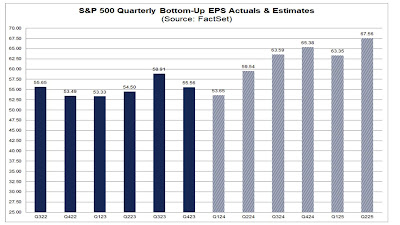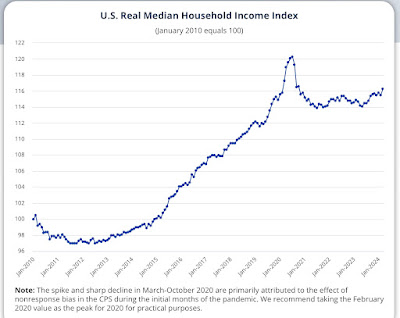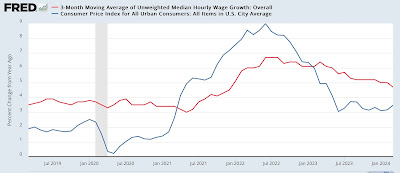- by New Deal democrat
First off, let me reiterate that my focus this year is on manufacturing and construction. That’s because these are the two sectors the waxing and waning of which have almost always determined if the US economy is growing or not. By contrast, for the past half century or more the production and consumption of services has tended to increase even right through most recessions.
With that framework in mind, yesterday I wrote about how, following interest rates, housing is range-bound.
This morning durable goods orders for March were reported, which gives me a good opportunity to update the state of the maufacturing sector.
Total durable goods orders rose 2.6% month over month. Core capital goods orders rose 6.0%. These series are very volatile. Thus the big increase in orders was only the third largest in the past 9 months, during which there have also been three months where orders declined -4% or more.
Stepping back and taking a longer term look shows that core capital goods orders (black in the graph below) have been generally flat for the past two years, while total orders (blue) may have risen and then fallen a little. This is similar to the trajectory of manufacturing production (red) which peaked in late 2022, but has only declined about -1% since then:
The YoY look at the same data shows just how “unchanged” the trend has been:
When we compare with the 25+ years before the pandemic, we see a number of instances - 1998, 2012, 2015-16, and 2019 - where both new orders and production declined significantly into negative territory YoY without a recession occurring:
The sideways trend is also apparent in manufacturing employment (blue in the graph below), which has stayed in a 0.2% range for the past 18 months. Average weekly hours (red) has declined -1 hour or more, which before the China shock of 2000 and since had always meant a recession. But hours above 40.5 per week are mainly about overtime; thus since then the decline must go below 40.5 hours to be signficant:
Finally, turning from the production to consumption side, real personal consumption on goods, which was similarly rangebound from 2021 through the first half of 2023, has been on an increasing trend since:
While having both housing and manufacturing in a rangebound, mainly flat trend isn’t good, it isn’t recessionary either, as services provision and spending continue to perform very well.

























